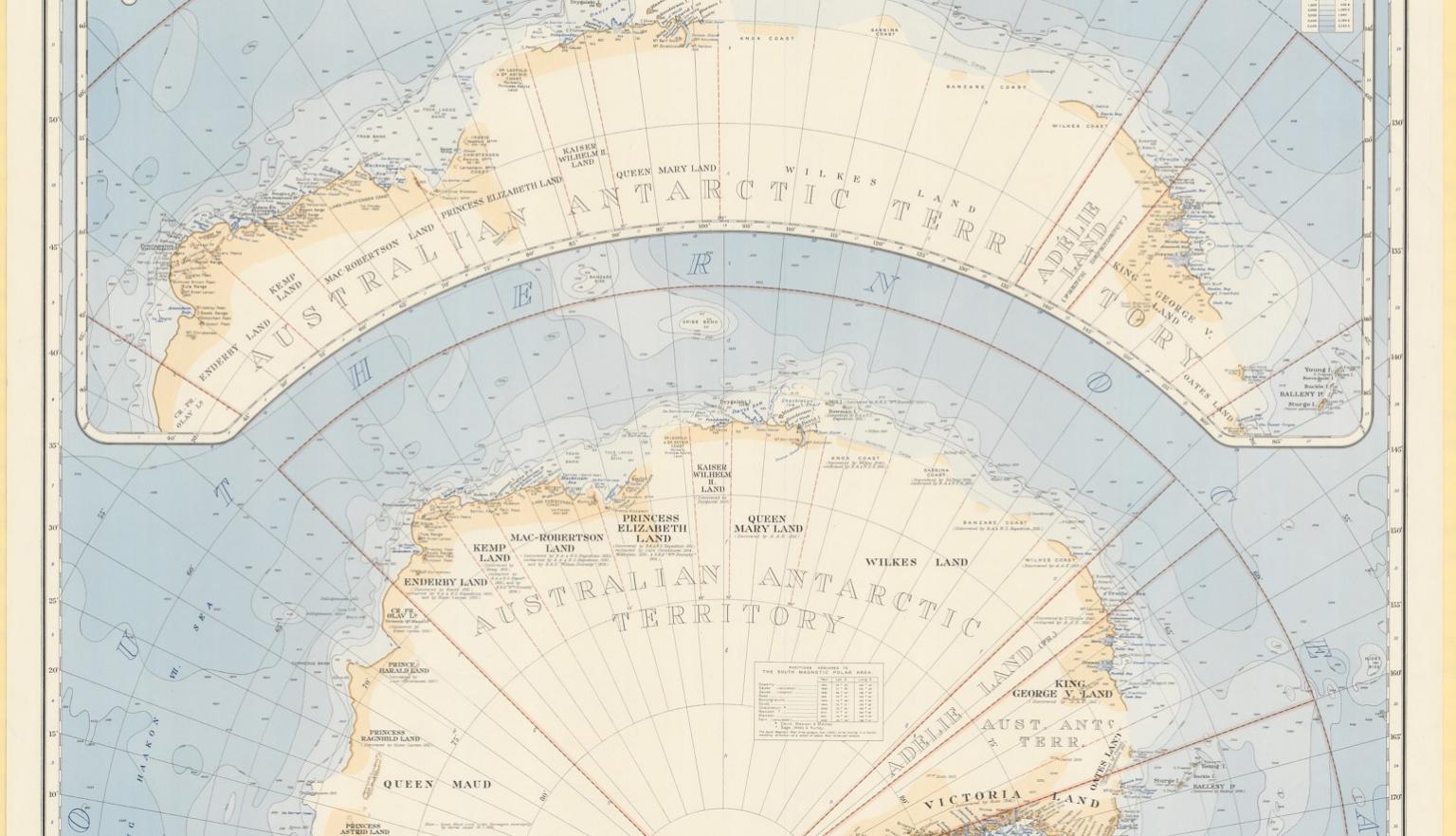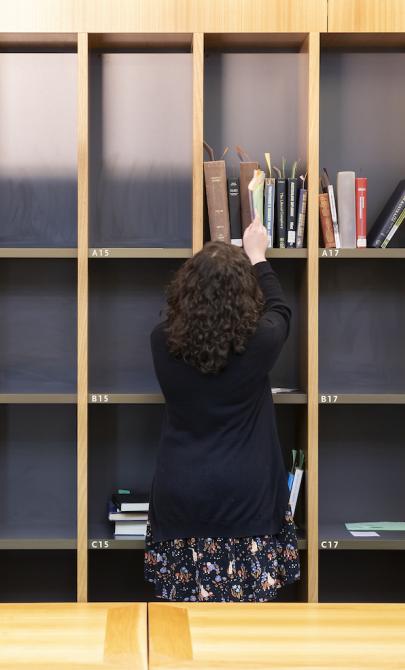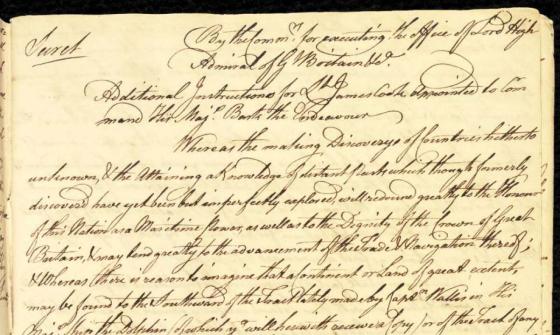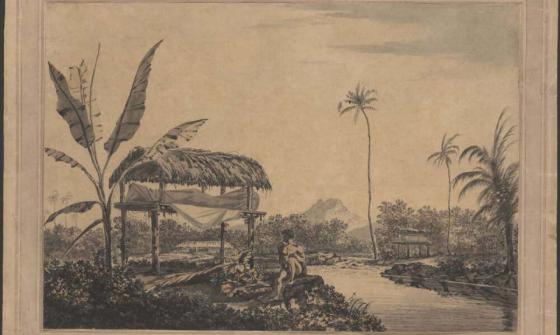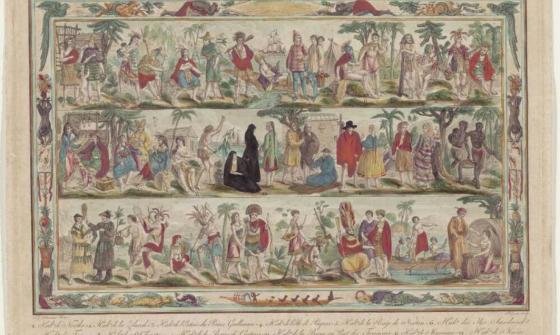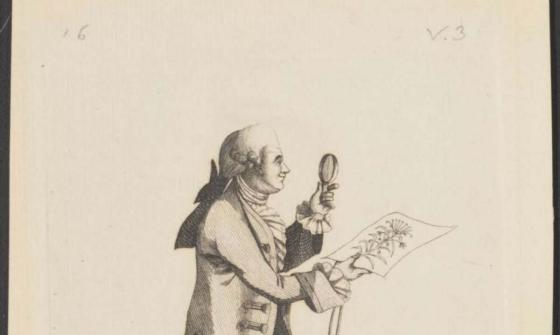Australian explorations in the Antarctic
Collection highlights
Key items in the collection
This collection hosts a range of formats, including:
References to the Antarctic can be found in many manuscript collections. The following are the principal collections documenting expeditions in the Antarctic.
Papers of Arthur Scholes, 1947-1951
Diaries kept by Arthur Scholes on the ANARE expedition to Heard Island, 1947-51
Papers of Vere Thomas Hodgson, 1901-1913
Papers of Thomas Vere Hodgson, a member of the 1901-4 British National Antarctic Expedition. They include notebooks, diaries, correspondence, photographs and typescript articles on Antarctic subjects.
Records of the Australian National Research Council, 1919-1954
Records of the Australian National Research Council, including minutes and papers of its Antarctic Committee (1927-35) and papers on an Antarctic expedition (1947).
Papers of Frank Hurley, 1912-1962
Papers of Frank Hurley, the photographer on the Antarctic expeditions led by Douglas Mawson (1911-14 and 1929-31) and Ernest Shackleton (1914-17). They occupy eight boxes and include diaries (1912-17, 1929-31), press cuttings, and the typescript of Shackleton’s argonauts (1948).
Papers of Thomas Griffith Taylor, 1880-1963
Papers of Thomas Griffith Taylor, the senior geologist on the British Antarctic Expedition in 1910-13. Housed in 56 boxes, they include a diary, sledging diaries, correspondence, letterbooks, manuscripts of articles, papers on glacial studies, and books.
Papers of John George Hunter, 1911-1964
Diaries and papers of John Hunter, chief biologist on the Australasian Antarctic Expedition, 1911-14.
Papers of Charles Whiting, 1933-1987
Papers and photographs of John C. Whiting, a pilot who undertook survey flights in Antarctica in 1965.
Papers of Sir Douglas Mawson, 1911-1931
Papers of Sir Douglas Mawson, mostly relating to Macquarie Island. They include diaries and logs (1912-13) and a report by Mawson on the island’s soils (1915). There are also logs kept on the Discovery (1930-31).
Papers of John Béchervaise, circa 1860-2001
Papers of John Béchervaise, leader of three ANARE expeditions to Heard Island and Mawson (1953-60). A very extensive archive (78 boxes), they include extremely detailed diaries and daybooks, correspondence, photographs, poetry and research papers and drafts of his biography of John Rymill.
Papers of Robert Olveston Summers, 1953-1956
Diary and scrapbooks kept by Robert Summers, a medical officer on the ANARE expedition to Mawson in 1954.
Papers of John King Davis, 1962-1965
Letters and cuttings of Captain John King Davis concerning his book High altitude, 1962-63
Diary and other papers of Sydney Evan Jones, 1911-1914
A diary and papers of Sydney Evan Jones, a medical officer on the Australasian Antarctic Expedition, 1911-14
Diaries of Leslie Gibbney, a biologist on the 1950 and 1952 ANARE expeditions to Heard Island.
Diaries and scrapbooks of Fred Elliott, a weather observer on ANARE expeditions to Heard Island and Mawson, 1953-58
Papers of Duncan Alexander Brown, 1955-1962
Papers of D.A. (Duncan Alexander) Brown, a member of the ANARE expeditions to Macquarie Island (1956), Mawson Station (1958) and Davis Station (1961). They include a diary of a traverse south of Mawson, personal messages, newsletters, photographs and slides.
Papers of Phillip Law, 1870-2010
Papers of P.G. Law, senior scientific officer (1947-48) and leader of 23 ANARE expeditions to the Antarctic and sub-Antarctic (1949-66). They are the largest of the Antarctic collections (105 boxes). They include voyage diaries, personal documents, correspondence, reports, navigational records, meteorological records, manuscripts of books and articles, press cuttings, scrapbooks and publications.
Papers of Elizabeth Chipman, 1904-2010
Papers of Elizabeth Chipman documenting her work in the Antarctic Division, her three visits to Macquarie Island (1967-75), and her research on Australians in the Antarctic.
The collection includes some of the earliest Australian maps of Antarctica, which consist of:
- Map of the 1st and 3rd years' tracks of the Australasian Antarctic Expedition, 1911-1914
- Preliminary chart showing the deep sea soundings taken on board the 'Aurora' during the 1st and 2nd years work of the Australasian Antarctic Expedition under Douglas Mawson, 1912-1913
- Graham Land [cartographic material] : B.G.L.E., January 1935 - March 1937
- Scientific Committee on Antarctic Research (SCAR) map collection
- The first official map of the Australian Antarctic Territories, Department of Interior,1939.
- Photographic copies of manuscript maps from the Mawson Collection.
- Three maps issued by the Royal Geographical Society in 1914, showing the routes taken by Australasian sledging parties.
- Two maps documenting the explorations of Hubert Wilkins in Antarctica during 1928-29.
- Photographic copies and tracings of maps created by the British, Australian, and New Zealand Antarctic Research Expedition led by Mawson (1929-31).
- Two charts published by the Royal Geographical Society in 1932.
From 1950 onwards, the collection also includes many printed and manuscript maps of the Australian Antarctic Territories published by various organisations, including:
- The Australian Antarctic Division
- The Division of National Mapping
- The Scientific Committee on Antarctic Research
Additionally, there is a comprehensive collection of about 70,000 aerial photographs of the Australian Antarctic Territories, mainly taken by the RAAF from 1956 to 1965, with a smaller number from the 1970s.
Journal written on the British National Antarctic Expedition, 1901-1904
Journal written on the British National Antarctic Expedition, 1901-1904 / Thomas Vere Hodgson (Scott Polar Research Institute, Cambridge)
- Phillip Garth Law interviewed by Lennard Bickel, 1975
- Eric Webb interviewed by Lennard Bickel, 1975
- John Bechervaise interviewed by Suzanne Lunney, 1976
- Richard Walter Richards interviewed by Lennard Bickel, 1976
- Isobel Bennett interviewed by Amy McGrath, 1980
- Hope McPherson interviewed by Ros Bowden, 1987
- Elizabeth Chipman interviewed by Ros Bowden, 1987
- Bob Orchard interviewed by Tim Bowden, 1989
- Paul Butler interviewed by Tim Bowden, 1996
Frank Hurley captured the largest collection of Antarctic photographs during expeditions led by Douglas Mawson (1911-14, 1929-31) and Ernest Shackleton (1914-17). These photos, numbering in the hundreds, showcase the ships Aurora, Endurance, and Discovery, along with crew members, scientists, and landscapes from places like Macquarie Island, Heard Island, South Georgia, and the icy regions of Antarctica. The images also depict wildlife such as penguins and sea elephants, as well as icebergs, pack ice, and blizzards.
The Mawson Collection, purchased in 1980, includes 473 photographs, about 400 of which focus on Antarctica. Taken mostly between 1911 and 1914 by Frank Hurley, Douglas Mawson, Frank Wild, and others, these photographs capture scenes of the ship Aurora, various islands, glaciers, and wildlife. Many also show the huts, daily life, and work of the expedition members. John G. Hunter’s archive holds an additional set of 36 lantern slides created by Hurley from photographs by Hurley, L.R. Blake, H. Hamilton, and Mawson.
Another significant contributor, Herbert Ponting, was part of Captain Robert Scott’s 1910-13 British Antarctic Expedition. His 35 photographs feature the ice-locked ship Terra Nova, penguins, seals, icebergs, and Mount Erebus. There’s also an album of images from Shackleton’s earlier Nimrod expedition (1907-09).
Biologist George W. Rayner’s collection includes 16 photographs from his time aboard Discovery II in 1931. Additionally, 45 photographs document ANARE’s 1947-48 expedition to Heard Island.
Writings by Australian explorers and scientists
- John Béchervaise, Blizzard and fire: a year at Mawson, Antarctica, 1963
- John Béchervaise, The far South, 1961
- LC Bernacchi, To the south polar regions: expedition of 1898-1900, 1901
- John King Davis, High latitude, 1962
- John King Davis, Trial by ice: the Antarctic journals of John King Davis, edited by Louise Crossley, 1997
- John King Davis, With the Aurora in the Antarctic, 1911-1914, 1919
- Frank Debenham, The quiet land: the diaries of Frank Debenham, member of the British Antarctic Expedition 1910-1913, edited by June Debenham Back, 1992
- Frank Hurley, Argonauts of the south, 1925
- Frank Hurley, Shackleton’s argonauts: a saga of the Antarctic ice-packs, 1948
- Charles Francis Laseron, South with Mawson: reminiscences of the Australasian Antarctic Expedition, 1911-14, 1947
- PG Law, Antarctic odyssey, 1983
- PG Law, You have to be lucky: Antarctic and other adventures, 1995
- PG Law and John Béchervaise, ANARE: Australia’s Antarctic outposts, 1957
- CT Madigan, Madigan's account: the Mawson Expedition: the Antarctic diaries of C.T. Madigan, 1911-14, transcribed by J.W. Madigan, 2012
- Douglas Mawson, Home of the blizzard, being the story of the Australasian Antarctic Expedition, 1911-1914, 2 vols, 1915
Biographies and historical studies
- Philip Ayres, Mawson: a life, 2003
- John Béchervaise, Arctic and Antarctic: the will and the way of John Riddoch Rymill, 1995
- Lennard Bickel, This accursed land, 1977
- Tim Bowden, The silence calling: Australians in Antarctica 1947-97, 1997
- David F Branagan, T.W. Edgeworth David: a life, 2005
- Adrian Caesar, The white, 1999
- Elizabeth Chipman, Australians in the frozen south: living & working in Antarctica, 1978
- Elizabeth Chipman, Women on the ice: a history of women in the far south, 1986
- David Day, Flaws in the ice: in search of Douglas Mawson, 2013
- Frank Debenham, Antarctica: the story of a continent, 1959
- MC Downes, First visitors to Heard Island, 2002
- Peter Fitzsimons, Mawson and the ice men of the heroic age: Scott, Shackleton and Amundsen, 2011
- John Grierson, Sir Hubert Wilkins, 1960
- Tom Griffiths, Slicing the silence: voyaging to Antarctica, 2007
- Brigid Hains, The ice and the inland: Mawson, Flynn, and the myth of the frontier, 2002
- Lincoln Hall, Douglas Mawson: the life of an explorer, 2000
- Marcus Hayward and Tom Griffiths, eds, Australia and the Antarctic Treaty system: 50 years of influence, 2011
- Tim Jarvis, Mawson: life and death in Antarctica, 2008
- David C. Jensen, Mawson's remarkable men: the personal stories of the epic 1911-14 Australasian Antarctic Expedition, 2015
- Alfred Lansing, Endurance, 2000
- Emma McEwin, The many lives of Douglas Mawson, 2018
- Alasdair McGregor, Frank Hurley: a photographer’s life, 2004
- Harvey J Marchant and others, eds, Australian Antarctic science: the first 50 years of ANARE, 2003
- Paquita Mawson, Mawson of the Antarctic: the life of Sir Douglas Mawson, FRS, OBE, 1964
- Stephen Murray-Smith, Sitting on penguins: Australia and the Antarctic, 1988
- Simon Nasht, The last explorer: Hubert Wilkins, Australia’s unknown hero, 2005
- A Grenfell Price, The winning of Australian Antarctica: Mawson’s B.A.N.Z.A.R.E. voyages, 1929-31, 1962
- Kathleen Ralston, A man for Antarctica: the early life of Phillip Law, 1993
- Beau Riffenburgh, Aurora: Douglas Mawson and the Australasian Antarctic Expedition 1911-14, 2011
- Marie Sanderson, Griffith Taylor: Antarctic scientist and pioneer geographer, 1988
- Douglas R.G. Sellick, ed., Antarctica: first impressions 1773-1930, 2001
- Caroline Strange and Alison Bashford, Griffith Taylor: visionary, environmentalist, explorer, 2008
- Lowell Thomas, Sir Hubert Wilkins: his life of adventure: an autobiography recounted, 1961
Australia's contributions to Antarctic exploration
C.E. Borchgrevink, a surveyor from Queensland, claimed to be the first person to land on the Antarctic continent in 1895 when he joined a Norwegian whaling expedition that reached Cape Adare. Four years later, Tasmanian meteorologist Louis Bernacchi was part of the first team to spend a winter on the continent.
Bernacchi went on to join the British National Antarctic Expedition (1901-1904) led by Captain Robert Scott. Australians played key roles in the following British expeditions as well. Geologists Edgeworth David and Douglas Mawson took part in Ernest Shackleton’s 1907-1909 expedition and became the first to climb Mount Erebus in 1908. Another two Australian geologists, T. Griffith Taylor and Frank Debenham, were part of Scott’s ill-fated 1910-1912 expedition and completed a detailed survey of the western shore of the Ross Sea. Photographer Frank Hurley was one of several Australians on Shackleton’s Trans-Antarctic Expedition (1914-1917), while Captain J.K. Davis commanded the Aurora, rescuing the survivors at Cape Evans in 1917.
Mawson’s leadership and later expeditions
Mawson led the 1911-1914 Australasian Antarctic Expedition, with Davis as his second-in-command. He established a meteorological station on Macquarie Island and set up a main base at Cape Denison in Commonwealth Bay. Geologist C.T. Madigan led an eastern sledging party that collected valuable data on ice and discovered a coal-bearing rock formation, while Mawson’s southern sledging party faced tragedy, with Mawson being the only survivor to return to base camp.
In 1928-1929, Australian aviator Hubert Wilkins, who had already explored the Arctic by air, conducted the first aerial surveys of Antarctica. He went on to lead four more expeditions. In 1929, Mawson returned as the leader of the British-Australian-New Zealand Antarctic Research Expedition, which mapped 1,500 miles of coastline and many islands. This work helped confirm Antarctica as a continent rather than a collection of islands connected by ice.
Establishing the Australian Antarctic Territory
In 1933, the Australian Antarctic Territory was officially created through a British Order in Council and the Australian Antarctic Territory Acceptance Act. By 1948, the Antarctic Division of the Department of External Affairs was set up to oversee the Australian National Antarctic Research Expeditions (ANARE), which led to the establishment of research stations at Mawson in 1954 and Davis in 1957.
Background to the collection
In addition to books, reports, and some hydrographic charts, the first Antarctic records acquired included papers from Thomas Vere Hodgson, a member of the British Antarctic Expedition from 1901 to 1904, which were donated by his family in 1937. Thomas Griffith Taylor contributed many of his papers and books between 1954 and 1955, with more donated by his widow in 1963. The photographs and papers of Frank Hurley were purchased from his family between 1963 and 1966. Douglas Mawson's papers and photographs were bought from the London book dealer Francis Edwards in 1980. The papers of John Béchervaise were acquired from him in 1989, with additional papers received from his executor in 1998. Phillip Law donated his papers between 1998 and 2003.
The personal papers are kept in the Manuscript Collection. Use the guide to:
The Maps Collection holds both maps and aerial photographs. There are about 1,150 boxes of aerial photographs. While some maps have been catalogued, many others, along with related documents, are stored with the SCAR (Scientific Committee on Antarctic Research) collection.
Oral history interviews and transcripts are stored in the Oral History Collection, and the photographs are in the Pictures Collection. Most of Frank Hurley's photographs have been catalogued and digitised. A list of photos in the Mawson Collection is available in the Pictures Branch, and Herbert Ponting’s photos have also been individually catalogued. Other photographs can be found in the personal papers collections, especially in the Béchervaise, Brown, and Law papers.
This guide was prepared using these references:
- John Béchervaise, John King David (1884-1967), in Australian Dictionary of Biography online
- Bernadette Hince, I do not expect to be lonely: John Béchervaise on Heard Island, National Library of Australia News, vol. 13 (12), Sept. 2003, pp. 3-6
- FJ Jacka, Sir Douglas Mawson (1882-1958), in Australian Dictionary of Biography online
